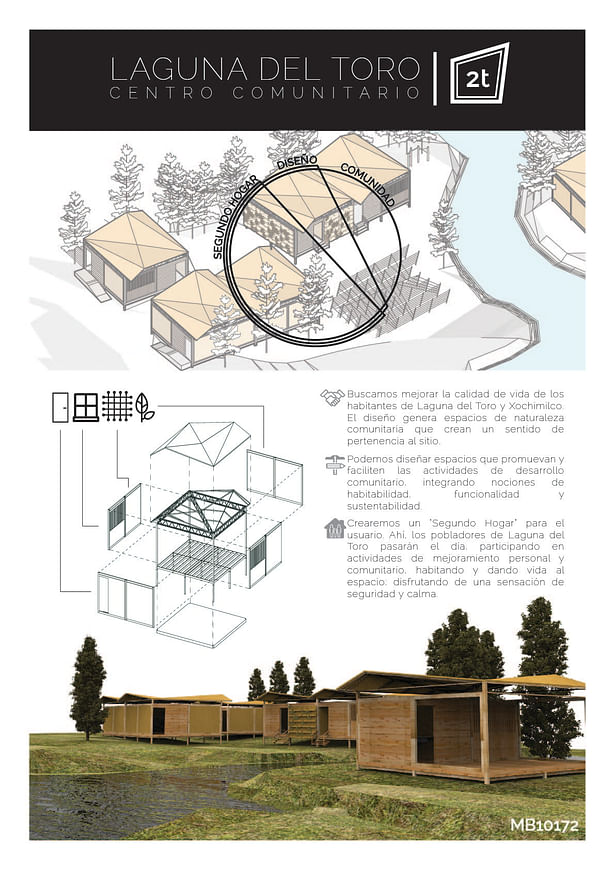anchor

Community: We seek to improve quality of life for the residents of Laguna del Toro & Xochimilco. The design generates community spaces that give its people a sense of belonging. Design: We can design spaces that promote and habilitate community development activities by integrating notions of habitability, functionality, and sustainability. Second Home: We will create a 'Second Home' (2DO TECHO) for the user. There, residents of Laguna del Toro con spend their day participating in activities for personal betterment and give life to the spaces, all the while enjoying a sense of security and calm.
2 more images ↓
2DO TECHO Community Center
Contest sumbission for FUGA: Techo 2014, Mexico City
Status: Competition Entry
Location: Mexico, MX
My Role: Designer/Drafter
Additional Credits: Collaborators: Daniela Velarde, Julio Velarde, & Alfredo Moreno



